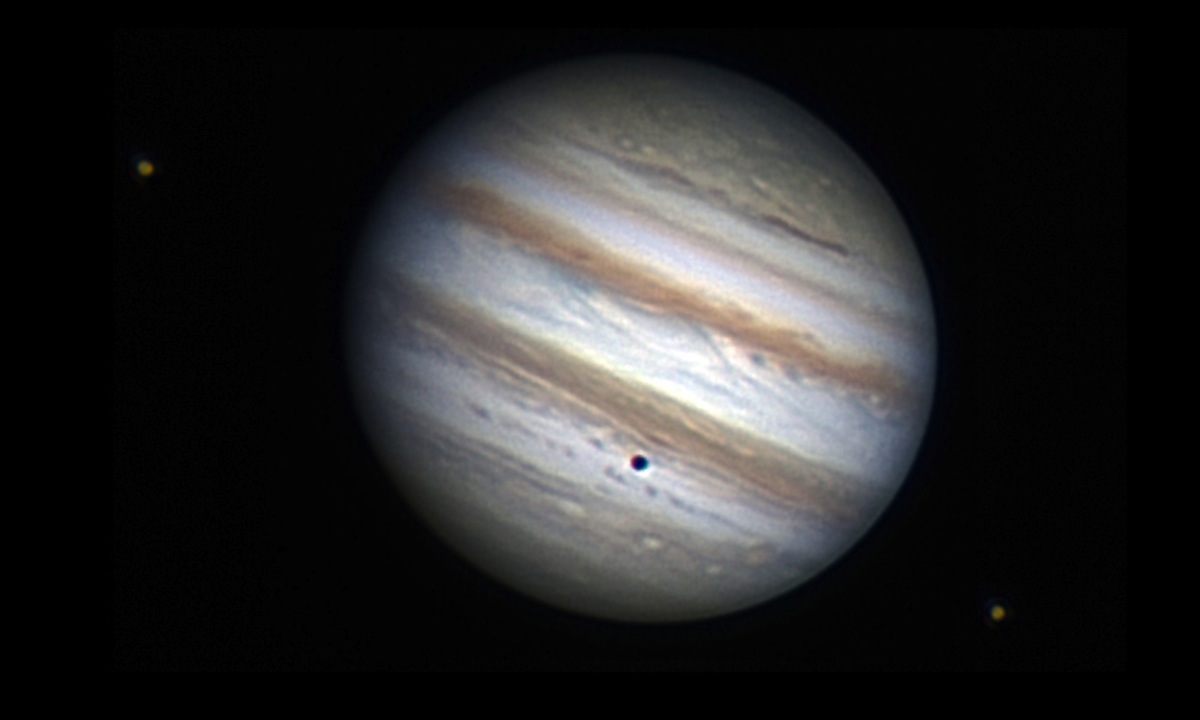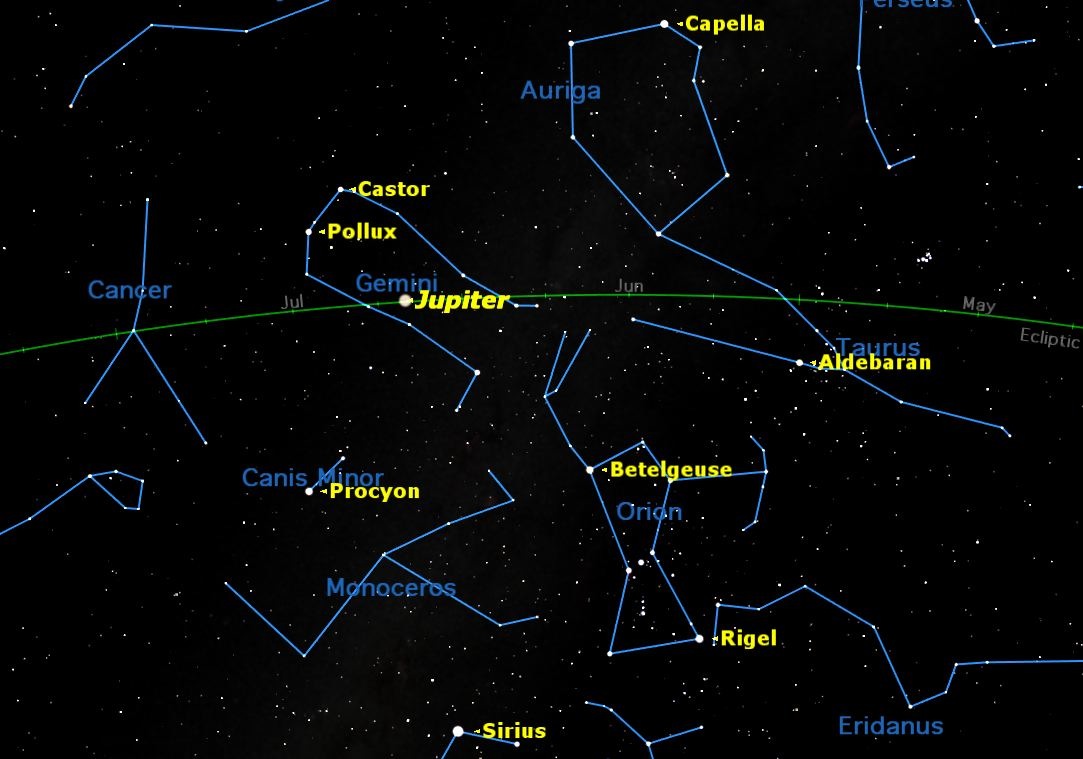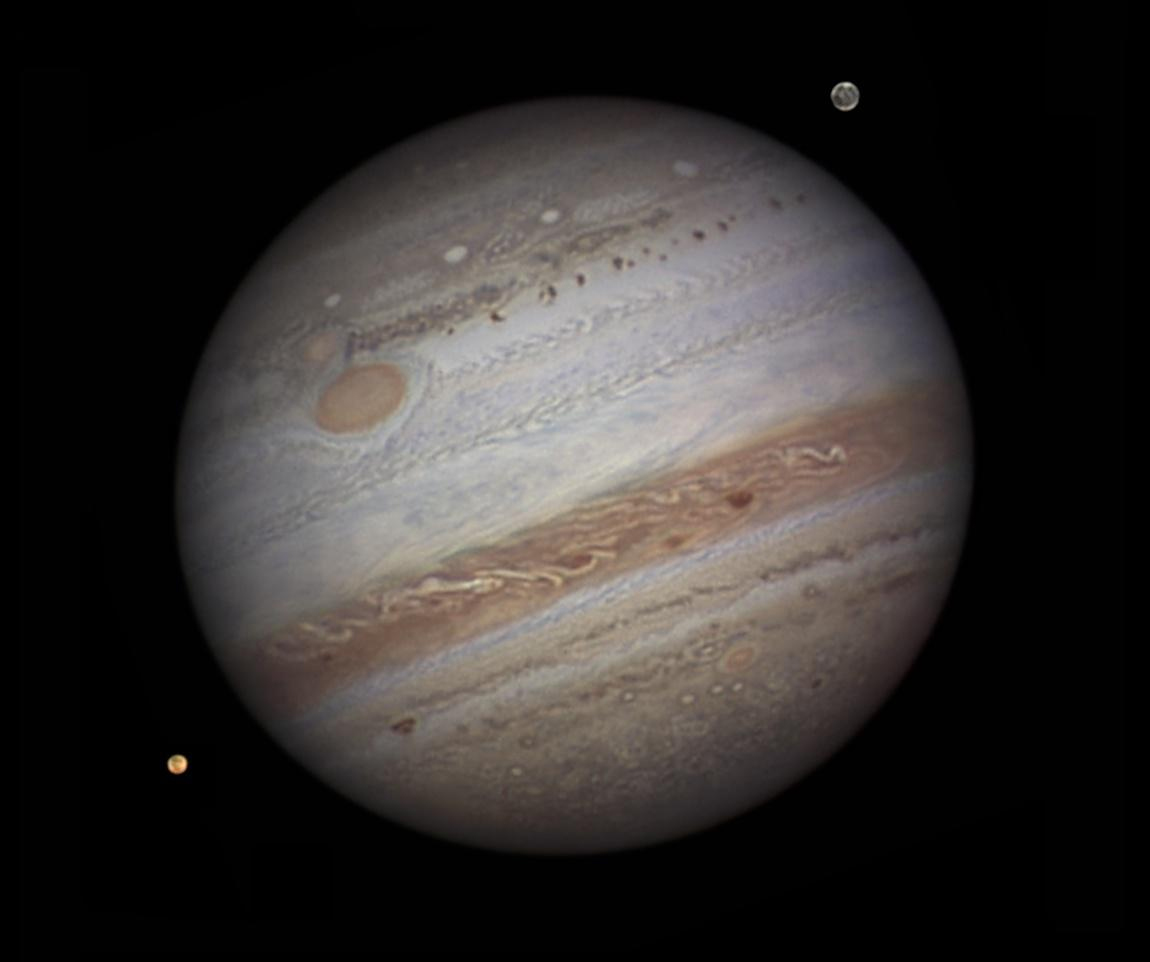Jupiter Shines All Night Long Sunday: How to See It

Jupiter will reign as king of the night sky on Sunday (Jan. 5), visible all night long as it reaches opposition.
This means that, in Earth's sky, Jupiter will stand exactly opposite the sun. As the sun sets in the west, Jupiter will rise in the east. Jupiter sets in the west just as the sun is rising in the east.

Because we are only two weeks past the winter solstice, the shortest day in the year, this means that Jupiter will be above the horizon for over 15 hours for skygazers in mid-northern latitudes. [Amazing Night Sky Photos by Stargazers: January 2014]
You can see a live webcast Jupiter at opposition online Sunday, courtesy of the online skywatching website Slooh. The all-night webcast will begin at 5 p.m. EST (2200 GMT) and feature views of Jupiter from the Prescott Observatory in Arizona.
With the naked eye, Jupiter will be the brightest object in the sky other than the moon, since Venus sets less than an hour after the sun. At magnitude -2.7 on the upside-down brightness scale astronomers use, Jupiter will outshine all of the bright circle of winter stars which surround it. Jupiter will be three times brighter than Sirius, the brightest star in the sky, at magnitude a -1.4.
With binoculars and a steady hand, you should be able to spot one or more of Jupiter's four brightest moons: Io, Europa, Ganymede, and Callisto. These are easy targets for even the smallest telescope.
Editor's note: If you snap an amazing photo of Jupiter that you'd like to share for a possible story or image gallery, send pictures, comments and other details to managing editor Tariq Malik at spacephotos@space.com.
Get the Space.com Newsletter
Breaking space news, the latest updates on rocket launches, skywatching events and more!
It is fun to follow in Galileo's footsteps and watch these four moons as they dance around Jupiter, shifting positions from night to night. Sometimes they pass in front of Jupiter, casting their shadows on his face; at other times they disappear behind Jupiter or into his mighty shadow.

More powerful telescopes reveal a wealth of detail in the tops of Jupiter's clouds. Jupiter's rapid rotation forces these clouds into distinct horizontal bands, easily visible in telescopes of at least 3 inches (75mm) aperture. Embedded in one of these cloud belts is a gigantic oval storm. This has been followed for centuries by astronomers, who call it the Great Red Spot.
Being a storm in Jupiter's upper atmosphere, the Great Red Spot drifts back and forth in longitude, while staying more or less at the same latitude. It varies in its color and darkness, but right now it is a particularly intense orange color according to Canadian astronomer Alan Whitman.
Because Jupiter is above the horizon for about 15 hours this month, we have a rare opportunity to observe a complete rotation of the planet, which takes slightly less than 10 hours. For example, on Tuesday night, Jan. 7, observers in eastern North America can see the Red Spot at 6 p.m. in the evening local time, and again, one full Jupiter day later, at 4 a.m. in the morning.
This article was provided to SPACE.com by Simulation Curriculum, the leader in space science curriculum solutions and the makers of Starry Night and SkySafari. Follow Starry Night on Twitter @StarryNightEdu. Follow us @Spacedotcom, Facebook and Google+. Original article on SPACE.com.
Join our Space Forums to keep talking space on the latest missions, night sky and more! And if you have a news tip, correction or comment, let us know at: community@space.com.

Geoff Gaherty was Space.com's Night Sky columnist and in partnership with Starry Night software and a dedicated amateur astronomer who sought to share the wonders of the night sky with the world. Based in Canada, Geoff studied mathematics and physics at McGill University and earned a Ph.D. in anthropology from the University of Toronto, all while pursuing a passion for the night sky and serving as an astronomy communicator. He credited a partial solar eclipse observed in 1946 (at age 5) and his 1957 sighting of the Comet Arend-Roland as a teenager for sparking his interest in amateur astronomy. In 2008, Geoff won the Chant Medal from the Royal Astronomical Society of Canada, an award given to a Canadian amateur astronomer in recognition of their lifetime achievements. Sadly, Geoff passed away July 7, 2016 due to complications from a kidney transplant, but his legacy continues at Starry Night.










